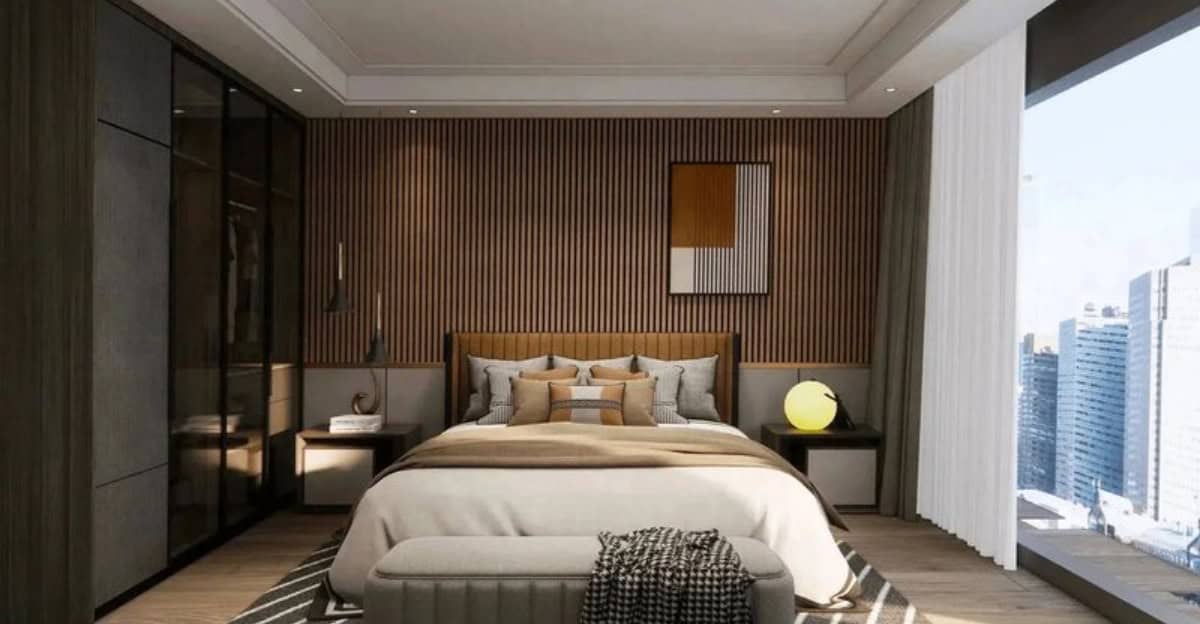Creating a tranquil sleeping environment is essential for a restful night’s sleep. Fortunately, soundproofing your bedroom doesn’t have to be a daunting task.
With a few practical steps, you can significantly reduce noise and enjoy a peaceful sanctuary.
Here are 10 effective ways to easily soundproof your bedroom and ensure you get the restful sleep you deserve.
1. Install Heavy Curtains
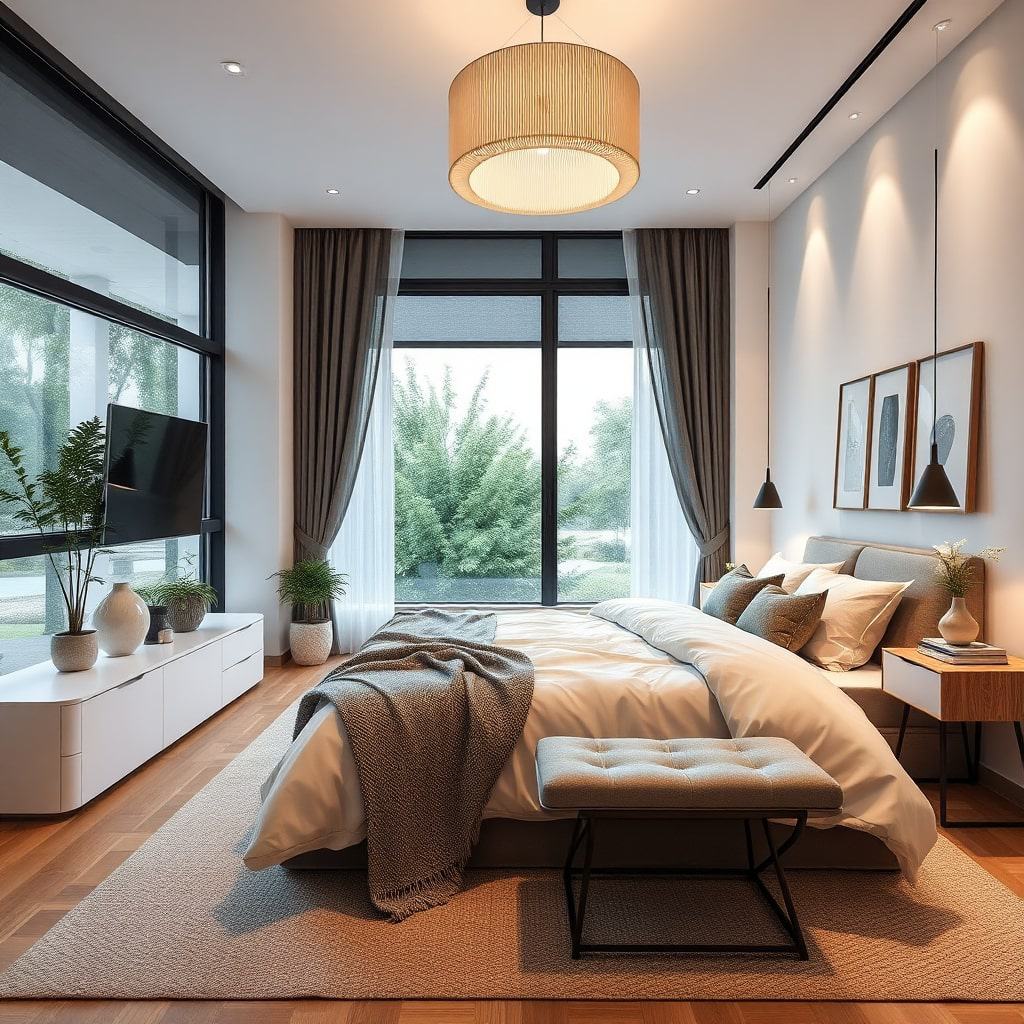
Heavy curtains not only add an aesthetic touch to your room but also help in reducing noise.
Opt for curtains made of dense materials like velvet or wool. These fabrics absorb sound waves, minimizing external noise.
In addition to sound absorption, heavy curtains can block out unwanted light, contributing to a more restful sleep environment.
Choose curtains that reach from the ceiling to the floor for maximum effectiveness.
Installing them is easy; simply hang them on a sturdy rod with adequate support to hold their weight. Enjoy a quieter and darker room with this simple addition.
2. Use a White Noise Machine
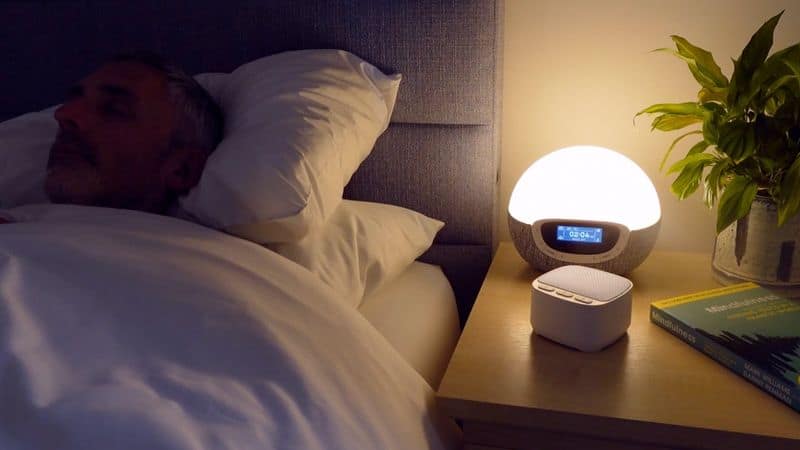
A white noise machine can be a game-changer in your quest for quiet. These devices produce consistent, soothing sounds that mask disruptive noises. Place it on your bedside table for optimum results.
The gentle hum of a white noise machine can lull you to sleep by creating a uniform sound environment. It’s especially beneficial in urban settings where unpredictable noise is common.
Experiment with different sound settings to find one that works best for you, from ocean waves to rainfall.
Enjoy a consistent soundscape that helps you drift into a peaceful slumber.
3. Seal Gaps Around Windows and Doors

Gaps around windows and doors are often the culprits of unwanted noise. Sealing these gaps can make a significant difference. Weather stripping is an effective and affordable solution.
Apply it around window frames and door jambs to create a tight seal. This not only reduces noise but also helps in maintaining room temperature.
For a thorough job, consider using a draft stopper at the base of the door. These simple measures can drastically cut down on noise pollution, creating a more serene sleep environment.
4. Add Acoustic Panels
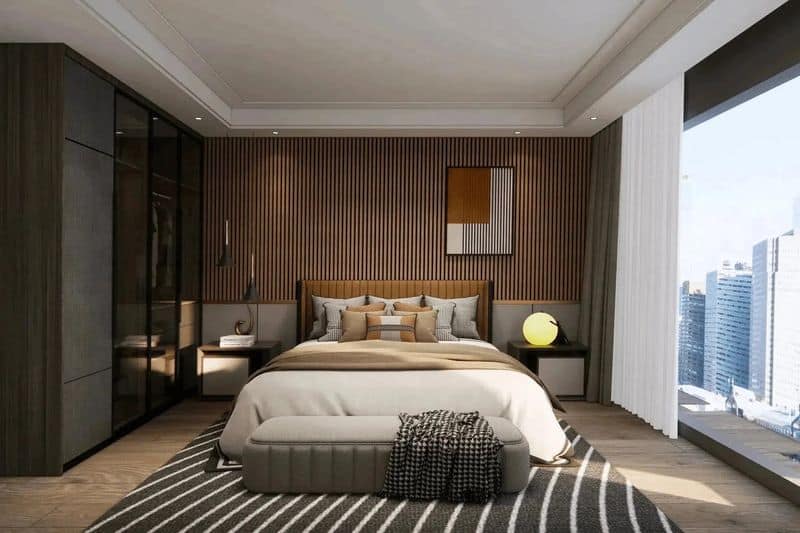
Acoustic panels are an excellent way to dampen sound. These panels are designed to absorb and reduce noise, making them ideal for a bedroom setting.
Available in various designs, they can blend seamlessly into your decor. Install them on walls that face the most noise, like those near a street or a busy hallway.
Besides reducing noise, acoustic panels can enhance your room’s aesthetic appeal.
Their installation is straightforward, and they can be customized to fit your space.
5. Use a Thick Rug or Carpet
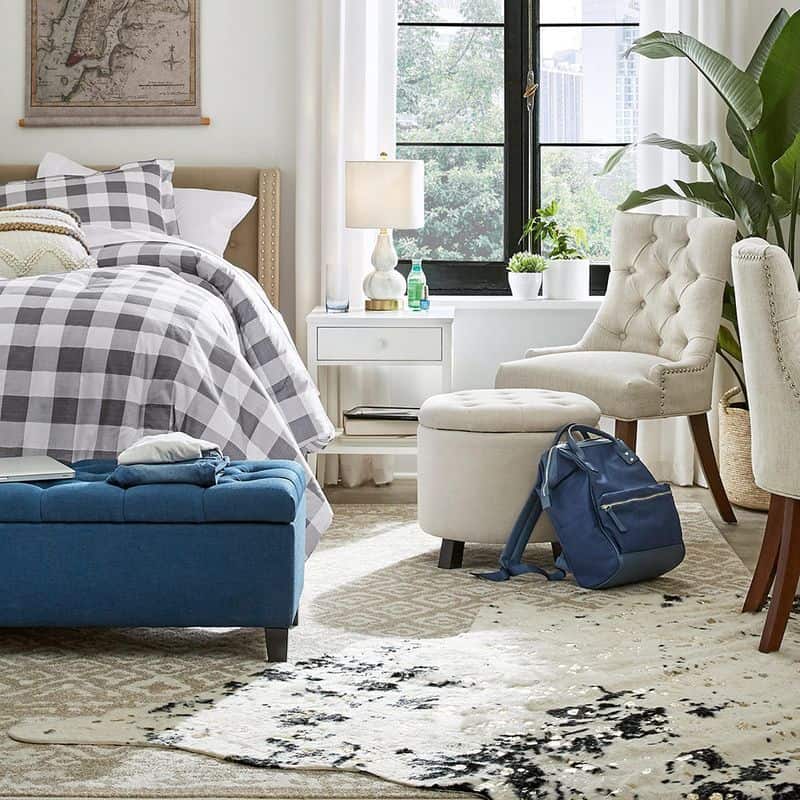
Floors can be major transmitters of noise, especially in multi-level homes. A thick rug or carpet can effectively muffle sounds. Opt for high-pile materials for the best results.
By covering your floor, you not only reduce noise but also add warmth and comfort to your bedroom. It’s a simple yet effective way to minimize sound from footsteps and other activities.
Choose colors and styles that complement your decor, turning your floor covering into a feature piece. Enjoy the dual benefits of style and soundproofing with this addition.
6. Install a Solid Core Door
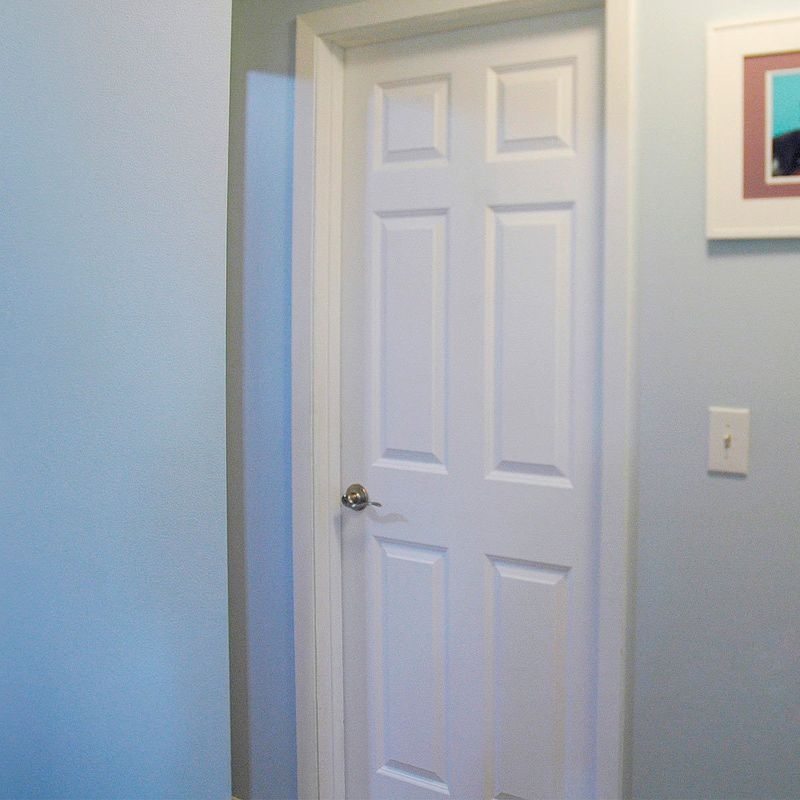
Replacing a hollow-core door with a solid core version can drastically reduce noise transmission. Solid core doors are denser, providing better sound insulation.
They are particularly effective in blocking out noise from hallways or shared spaces. This upgrade enhances both privacy and tranquility in your bedroom.
Installation is a straightforward process, but ensure accurate measurements for a snug fit.
The investment in a solid core door pays off with a noticeably quieter living space, ensuring your bedroom remains a peaceful retreat.
7. Hang Tapestries or Wall Hangings

Tapestries and wall hangings aren’t just decorative; they also contribute to soundproofing. These fabric pieces absorb sound waves, reducing echoes and noise.
When choosing a tapestry, consider heavy fabrics for maximum sound absorption. Hang them on walls that face external noise for the best results.
Besides their functional benefits, tapestries add a personal touch to your decor, allowing you to express your style.
Easily switch them out with the seasons or your mood, offering a versatile soundproofing solution.
8. Use Door Sweeps
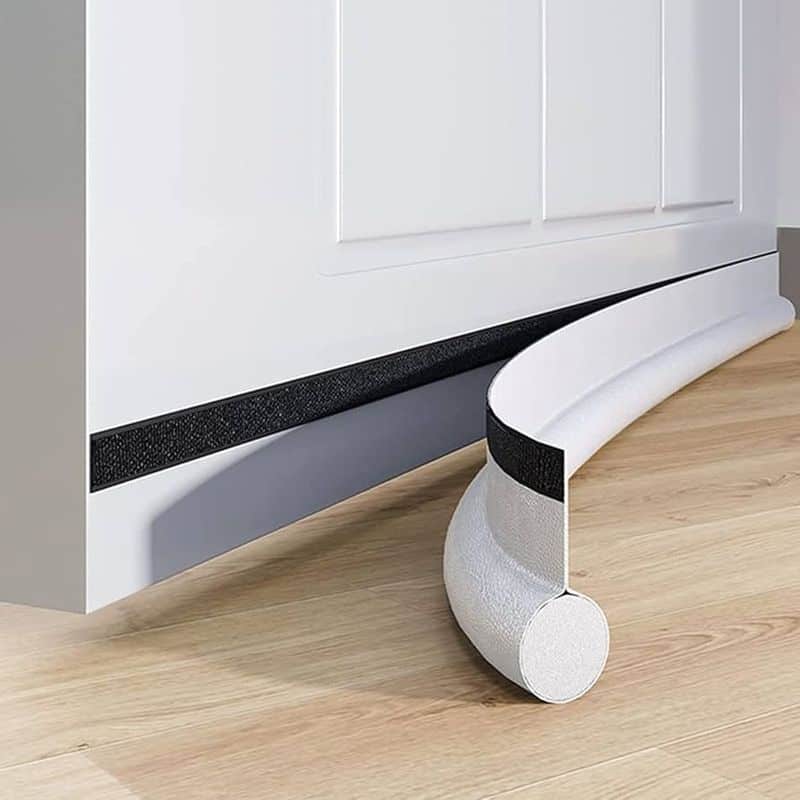
Door sweeps are an effective way to block noise from entering through the gap at the bottom of doors. These simple devices are easy to install and can make a noticeable difference.
Choose a sweep that fits snugly against your floor without scraping. They work well in combination with weather stripping around the door frame for comprehensive noise reduction.
Besides soundproofing, door sweeps prevent drafts and insects from entering, offering multiple benefits.
With a few minutes of installation, enjoy a quieter and more comfortable bedroom environment.
9. Invest in Soundproof Windows
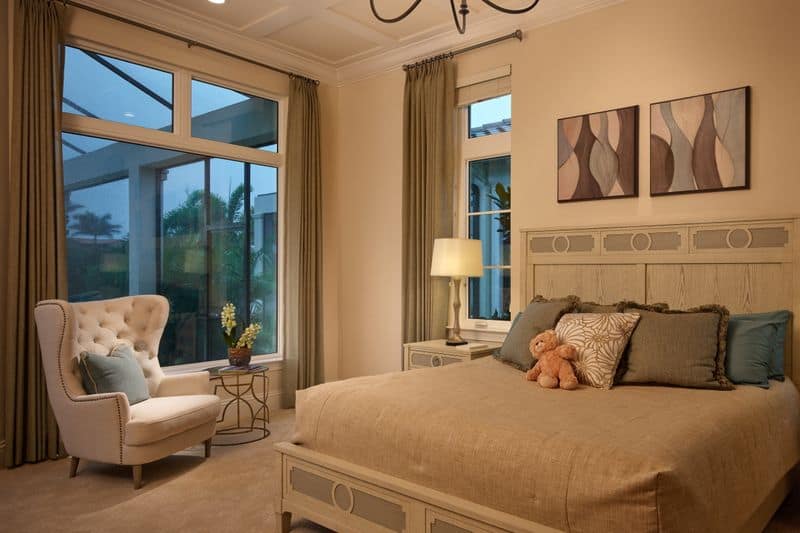
Soundproof windows are a more substantial investment but offer significant noise reduction. These windows use multiple layers of glass and air gaps to block sound effectively.
Ideal for bedrooms facing busy streets or noisy neighborhoods, they provide both acoustic and thermal insulation.
The initial cost is offset by the comfort and energy savings they deliver.
Professional installation ensures a perfect fit and maximum soundproofing. While more expensive, the tranquility they offer makes soundproof windows a worthwhile consideration for your bedroom.
10. Rearrange Furniture Strategically
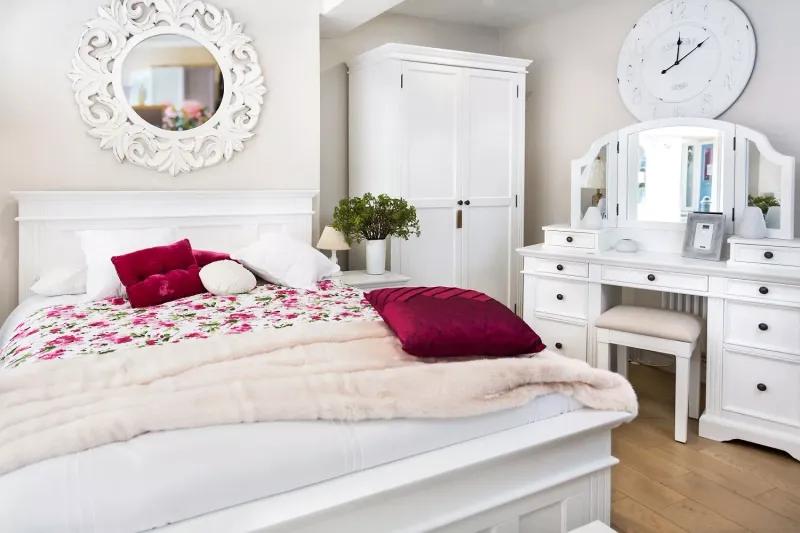
Strategically arranging your furniture can aid in sound reduction. Place large pieces like bookshelves or wardrobes against walls that face noisy areas.
These items act as barriers, absorbing and deflecting sound waves. Additionally, positioning your bed away from external walls can minimize noise exposure while sleeping.
Experiment with different layouts to find the most effective arrangement.
This zero-cost solution leverages existing resources to create a quieter, more restful bedroom environment, enhancing your sleep quality with minimal effort.

